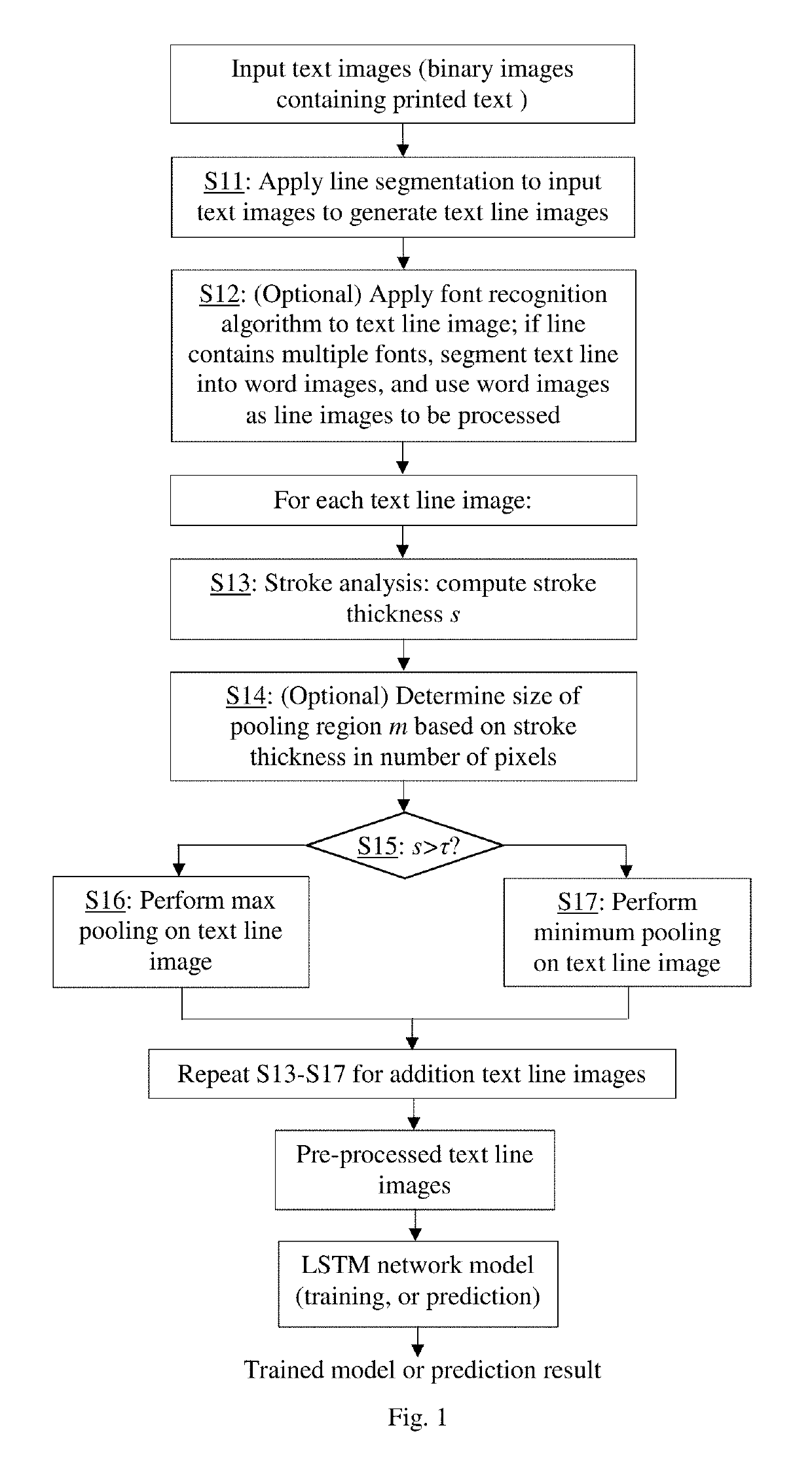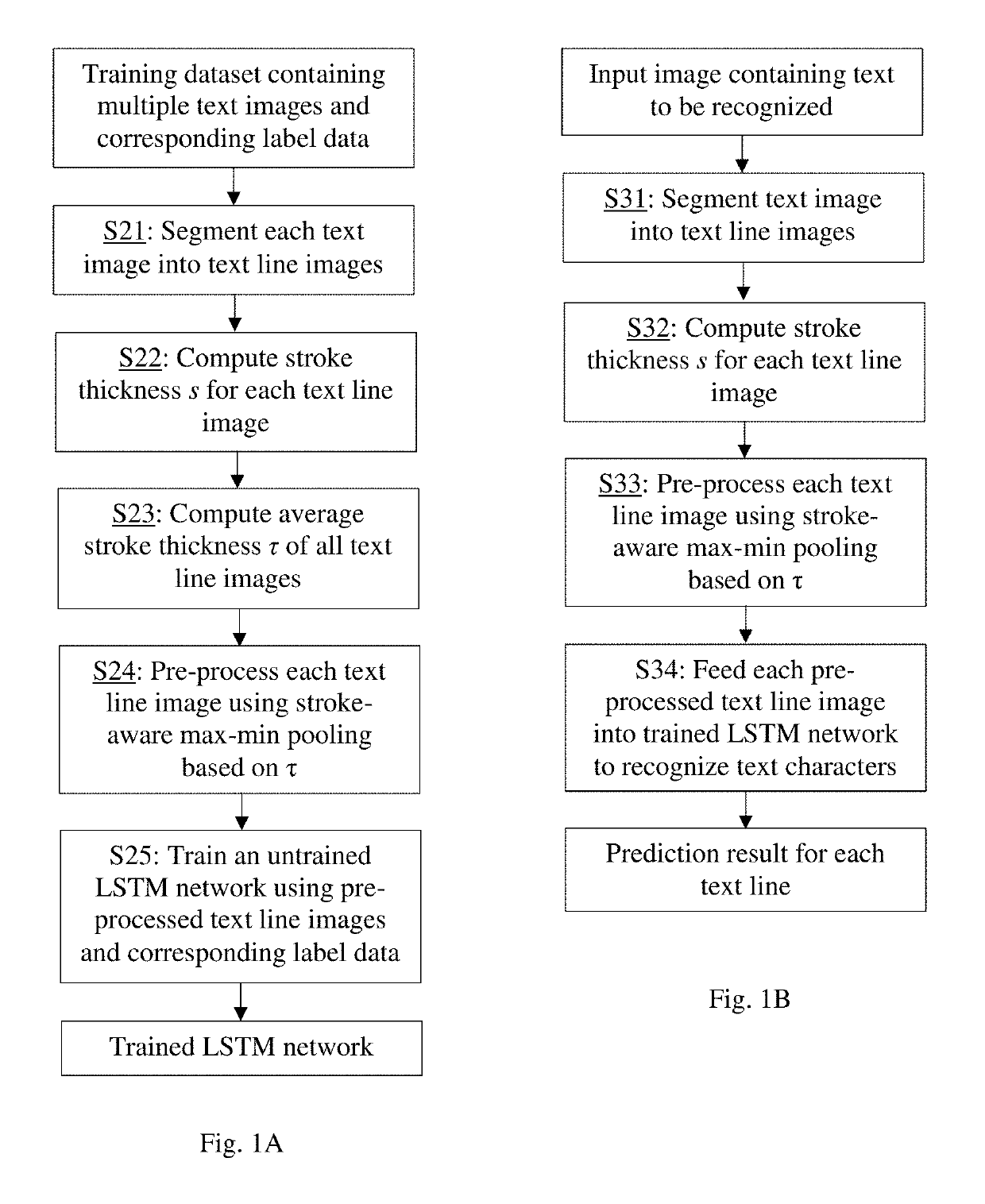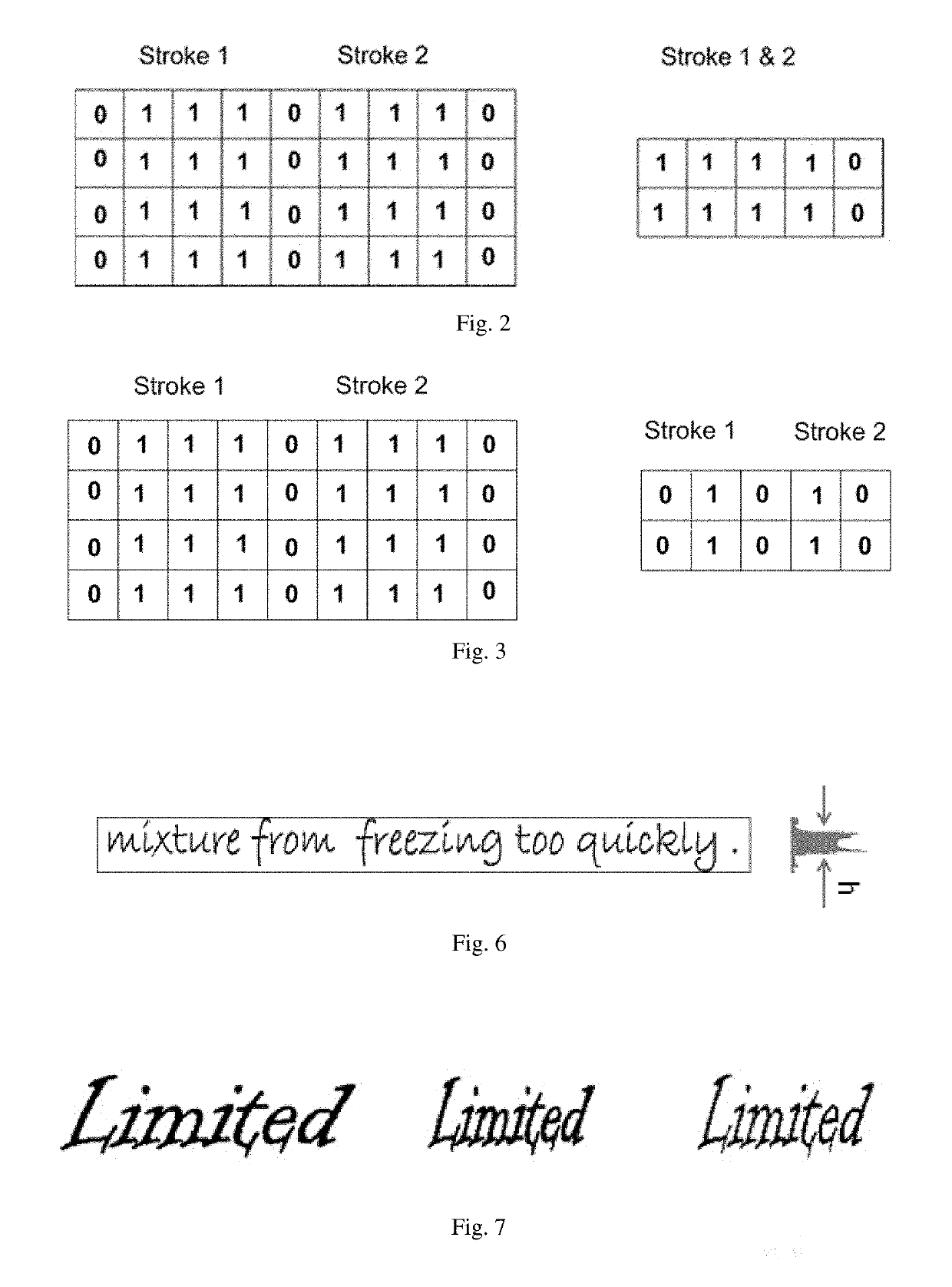Text image processing using stroke-aware max-min pooling for OCR system employing artificial neural network
a technology of artificial neural network and text image, applied in the field of text image processing, can solve the problems of reducing complexity, difficult to deploy lstm in large-scale or resource-constrained environments, such as data centers and mobile devices, for real-time processing of large digital transformations, etc., and achieves the effect of reducing computation costs and increasing recognition accuracy
- Summary
- Abstract
- Description
- Claims
- Application Information
AI Technical Summary
Benefits of technology
Problems solved by technology
Method used
Image
Examples
Embodiment Construction
[0020]Embodiments of the present invention provides an image processing method which pre-processes a text image before inputting the image into a recurrent neural network (RNN) for character recognition. Referring to FIG. 1 (described in more detail later), steps S11 to S17 are the image pre-processing process. The method is primarily intended to be applied to printed text presented as binary images (i.e. images where the pixel values are 0 and 1). The method does not require any modifications to the neural network model that is used for character recognition, except that it allows for fewer time steps to be used in the RNN model than would otherwise be needed. The method also reduces the size of the images that are and processed by the neural network. By applying a stroke-aware max-min pooling technique on the input text image to reduce its size, embodiments of the present invention can reduce computation complexity of the neural network model and increasing character recognition a...
PUM
 Login to View More
Login to View More Abstract
Description
Claims
Application Information
 Login to View More
Login to View More - R&D
- Intellectual Property
- Life Sciences
- Materials
- Tech Scout
- Unparalleled Data Quality
- Higher Quality Content
- 60% Fewer Hallucinations
Browse by: Latest US Patents, China's latest patents, Technical Efficacy Thesaurus, Application Domain, Technology Topic, Popular Technical Reports.
© 2025 PatSnap. All rights reserved.Legal|Privacy policy|Modern Slavery Act Transparency Statement|Sitemap|About US| Contact US: help@patsnap.com



